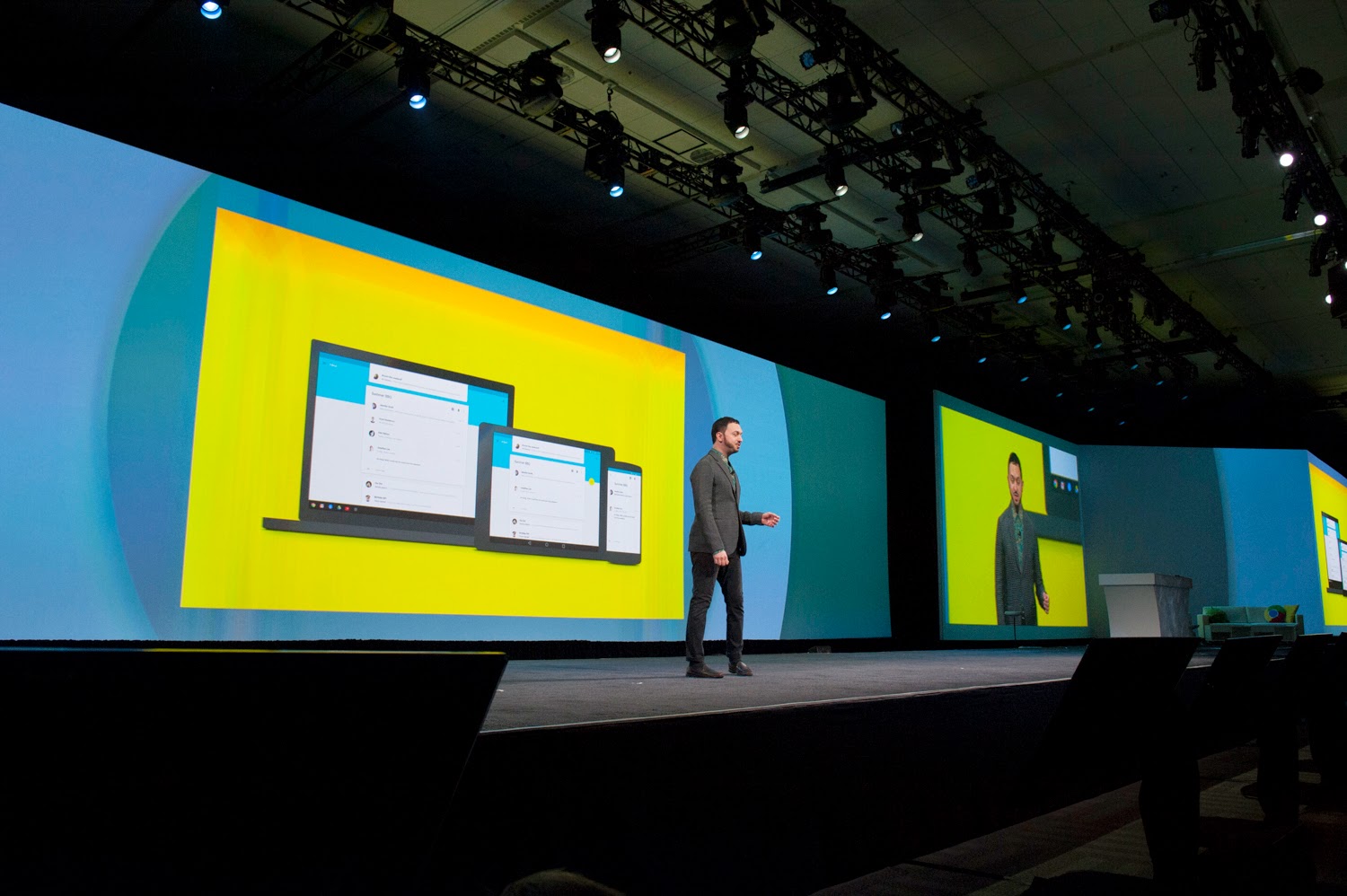It is without doubt the most important event of the year for Android and, as such, Google presented many innovations to the more than 5,000 developers gathered in San Francisco. Some of these new developments were much anticipated, such as the new version of its operating system; others, although predicted, confirmed the commitment of the company with portable technology.
Android L
It was one of the major announcements expected by many of the company’s followers. The new version of Google's operating system for smartphones and tablets was unveiled with the codename Android L, and even though its final name is still a mystery (some are saying Lollipop), the company presented all its features, both visual and technical. Definitely, Android L will represent a big change from its predecessors.
First of all, the first thing users will see in the next update of Android, which will arrive in the fall, is a new interface. The company wanted to give a breath of fresh air to the appearance of the new Android adding multiple layers and shadows to objects. The different elements of the interface will be several levels deep, which translates into new transitions between menus and objects on the screen. Google presented this new design as Material Design, in general much more minimalist than the previous versions of Android.
Another feature that the fans of Android will appreciate is the improved multitasking management. Clicking on the Recent Apps button users will get something similar to what you see when using Chrome and navigate through the different tabs, but in a more lively way, showing more content and with a 3D effect. If you want to learn more about this and other new features, we recommend you to read this article.
Now, let’s have a look at the technical aspects mentioned before, among which we highlight what undoubtedly means a great leap forward: moving from 32 to 64 bits. Up to now only one company had dared to make the move into this processing architecture: Apple, with its iPhone 5S. But Google doesn’t want to be less and besides a revamped interface it has decided to adapt its mobile operating system to 64-bit.
This will mean some other headache for some developers, because they will have to redesign their applications to match the 64-bit architecture. Apps based on 32-bit will be able to work without problems on the new 64-bit operating system, although, logically, they will not take full advantage of all the resources that are offered.
L is already available for Android developers, who can start playing with the new operating system by downloading the SDK. Also, for those who are starting Google offers a guide to create your first mobile application for Android.
Android and wearable technology
Android Wear, Android TV and Android Auto are three new concepts created by Google presenting a new way to interact with our devices, whether they are watches, bracelets, televisions or cars.
Although the company showed the Android Wear technology in Google I/O, the truth is that it had already been presented last March (including the launch of an official teaser). However, with the presentation at the event in San Francisco Google proved that it is a technology that won’t be ignored and will continue to work on it.
In parallel to the launch of Android Wear, Google has created a collection of compatible applications such as IFTTT, with its new dedicated channel, Hangouts, Pinterest, news and airline apps, etc. The list will continue growing as developers create and update apps with the SDK for wearables. For example, Computerworld magazine already talks about five apps that will be available in the near future for Android Wear.
At the moment, the apps already developed can be found in Google Play, and we can download them as any other application to our Android device (remember that Android Wear works thanks to the connection to an Android device via Bluetooth). The only requirements to use one of these apps, in addition to having an Android Wear, is to have a device with Android 4.3 Jelly Bean or higher and Bluetooth 4.0 LE, in order to make the connection between devices.
Another major announcement was Android Auto, a platform that allows mobile phones with Android to integrate applications like Google Maps or the voice control of Google Now with cars’ touchscreens. The company already signed agreements with 40 car manufacturers and expects the first Android-equipped models to be sold by the end of the year.
Finally, we highlight Android TV, a platform for televisions that in addition to enjoying a full Android experience on your TV set allows users to access the games in Play Store without any additional device. It also incorporates the functions of Chromecast, with which you can stream audio and video from any device directly to the TV. Sharp, Sony and TPVision have announced that they will be equipped with Android TV.
If you want to be one of the first to create applications for these two new systems, you can already download the SDKs for Android Auto and Android TV that Google has made available to developers.


























